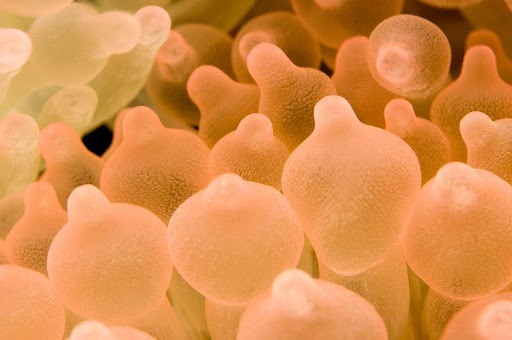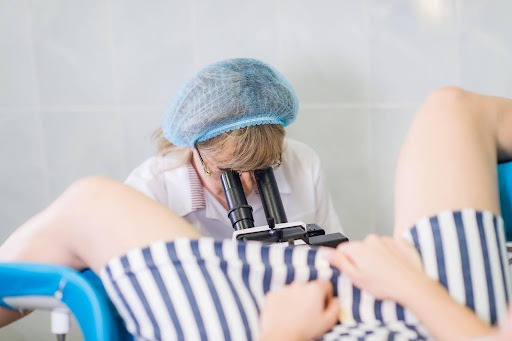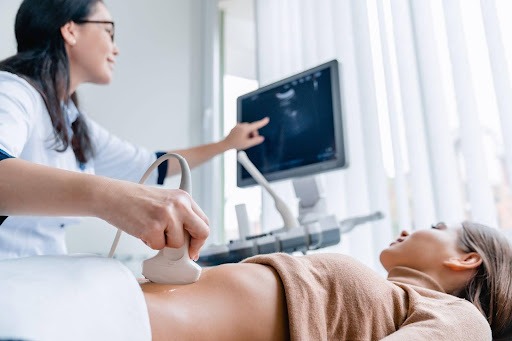Understanding Post-Menopausal Bleeding: What Every Woman Should Know
Managing Postmenopausal Bleeding: A Comprehensive Guide
Menopause commences with the end of the menstrual cycle and various unprecedented health ailments. One alarming symptom that a few women may experience is bleeding after menopause, termed gynecologically as Post-Menopausal Bleeding (PMB). This is not just a medical concern but also a source of considerable anxiety to the affected individual.
PMB is defined as any vaginal bleeding that occurs 12 months after the last normal menstrual cycle. Post-menopausal bleeding is a common clinical pathology, affecting approximately 5% of gynecology visits. Although it is usually considered benign in origin yet, it is abnormal and warrants medical attention.
Doctors recommend that any vaginal bleeding that occurs 6 months after the last period should be investigated. The bleeding after menopause can range from light spotting to heavy flow, and from a few hours to several days. Post-menopausal bleeding is usually attributed to gynecologic sources like intrauterine, cervix, vagina, vulva, fallopian tubes, and ovaries (hormones producing tumors) however, it may also arise from non-gynecological sources for instance bleeding from the urethra, urinary bladder, anus/ rectum etc.
Are you experiencing such bleeding? Do not panic, let’s explore various causes of bleeding after menopause, with insights into why it happens and what steps should be taken to address it.
What are the Most Common Causes of Bleeding after Menopause?
The causes of post-menopausal bleeding are directly correlated with the declined estrogen levels in menopausal women. Let’s apprehend the causes step by step:
1. Endometrial Atrophy
The endometrium is the innermost layer of the uterus and in medical terms, endometrial atrophy is the thinning and degradation of the endometrial lining usually due to declined estrogen levels in women’s bodies after menopause. It is one of the most common causes of post-menopausal bleeding. The fragility and thinning of the endometrium lead to bleeding or spotting as the delicate tissues may easily break and bleed.
2. Endometrial Hyperplasia
This condition is just opposite to the endometrial atrophy in terms of definition. It refers to the thickening of the endometrial lining due to excessive cell proliferation, often caused by prolonged exposure to high levels of estrogen-only (without progesterone). This condition may trigger both menstruating as well as menopausal women and cause heavy and irregular bleeding. In menstruating women, polycystic ovarian syndrome (PCOS) may cause endometrial hyperplasia while in menopausal women, hormonal therapy (estrogen-only) for long duration and obesity may be the cause.
3. Vaginal and Cervical Atrophy
Similar to the endometrium, when the tissues of the vagina and cervix become thin, fragile, and less elastic termed an atrophied vagina or cervix. Estrogen maintains vaginal moisture and with declined estrogen levels, vaginal and cervical tissues get dried and fragile. Sexual activities during such conditions lead to bleeding.
4. Hormonal Therapy (HRT)
It is a well-known treatment option for alleviating menopausal symptoms however, hormonal therapy has several side effects where these exogenous hormones stimulate the endometrium, leading to irregular bleeding in the menopausal stage.
5. Polyps
Polyps are benign, outgrowths in the inner wall of the uterus, endometrium, and vagina. Usually, these outgrowths are non-cancerous and increase the surface area of the uterine lining, which can be prone to bleeding. Such polyps are more vascular than the surrounding tissues which may get punctured even with a minute stimulus, especially in menopausal condition.

6. Fibroids
This is another category of non-cancerous outgrowths of the uterus, often appearing during the childbearing age. However, they also persist after menopause and may cause heavy bleeding due to distortion of uterine architecture, increased surface area and interference with normal uterine function. Fibroids lead to significant discomfort such as pelvic pain and pressure.
7. Endometrial, Ovarian, Vaginal, and Cervical Cancer
Cancers in reproductive organs can cause bleeding in menopause through tumor growth, ulceration, hormonal changes invasion of blood vessels, etc. This is the most serious and alarming cause of post-menopausal bleeding. Its early detection and treatment are crucial for a favorable prognosis, making it imperative for women experiencing postmenopausal bleeding to seek medical evaluation promptly.
8. Infections
Certain bacterial, fungal, and viral agents cause infection in uterine and cervical infections (endometritis and cervicitis respectively). This results in itching, pain, and inflammation in the abdominal area and ultimately leads to vaginal bleeding.
9. Medications
Patients undergoing certain medications to alleviate menopausal symptoms including selective estrogen receptor modulators (e.g., tamoxifen), anticoagulants can lead to abnormal bleeding. Such drugs affect blood clotting ability, stimulate the endometrial tissue, and result in bleeding.
10. Other Medical Conditions
An underactive and overactive thyroid gland generates hormonal imbalance in women’s bodies and contributes to post-menopausal bleeding. Other than this, coagulation disorders and trauma including physical injury to the uterine and vaginal area also cause bleeding in menopausal women.
11. Non-gynecological Causes
Such causes of post-menopausal bleeding include gastrointestinal disorders where swollen veins in the lower rectum or anus, formation of small pouches (diverticula) in the colon wall, colorectal cancer, urinary tract disorders, and liver disease (cirrhosis) lead to bleeding.
Diagnostic Procedure of Post-menopausal Bleeding
How to know if the cause of post-menopausal bleeding is gynecologic or non-gynecologic?
1. Differential Diagnosis
If the medical practitioner suspects gynecological bleeding, the diagnosis will be done using pelvic exams, ultrasounds, and biopsies since the bleeding is typically linked to the reproductive organs (uterus, cervix, and vagina). Contrary to this, if the healthcare provider has doubts about non-gynecological bleeding, the diagnosis will be through urinary tests, endoscopy of the gastrointestinal tract, and imaging studies.
2. Detailed Symptom Inquiry
Practitioners may ask about the nature of bleeding i.e., they may ask about the color, amount, and timing of the bleeding along with the associated symptoms like pain, urinary symptoms, systemic signs, etc.
3. Medical History
Doctors usually review all the current and past medications a patient has gone through, especially anticoagulants and hormone therapy.
4. Gynecological Examination
The healthcare providers will inspect the pelvic region, external genitalia, vagina, and cervix for any visible lesions, polyps and fibroids. Further, they may also examine the vaginal walls to identify the actual sources of bleeding in menopausal women.

5. Rectal Examination
Digital rectal examination and stool guaiac test for checking hemorrhoids, masses, and occult blood in stool respectively help in identifying the actual cause of bleeding in menopausal women.
6. Urinary Examination
It includes inspection and palpation of the urinary system for assessing any signs of bladder or urethral bleeding.
What are the Diagnostic Tests?
Examination of medical history and physical inspection are followed by a diagnosis of postmenopausal bleeding with certain tools and techniques. These are:
1. Endometrial Biopsy
A small sample of the uterine lining is taken for microscopic analysis and for checking any abnormal growth of the cells. From this, detection of hyperplasia, atrophy, and cancerous growth of cells can be done.
2. Transvaginal Ultrasound
This imaging technique helps in measuring the thickness of the endometrial lining and identifying any abnormalities such as polyps and fibroids. It is interesting to note that this machine uses sound waves to create pictures of the uterus and ovaries.

3. Hysteroscopy
It is the procedure in which doctors insert a thin, lighted tube through the vagina and cervix into the uterus. It is helpful in direct visualization of the uterine cavity and helps in diagnosing abnormalities like polyps, fibrosis, and hyperplasia.
4. Dilation and Curettage (D&C)
It includes the dilation of the cervix followed by scraping of uterine tissues for examining the abnormal growth.
5. Blood Tests
It is done to identify systemic conditions like thyroid and coagulation disorders that may be contributing to irregular and abnormal bleeding in menopausal women.
6. Cystoscopy
It involves the direct visualization of the bladder and urethra to examine for lesions and other sources of bleeding.
What are the Treatment Options for Post-Menopausal Bleeding?
1. Hormonal Therapy
For balancing the hormonal levels of endometrial atrophy in menopausal women, adjusting the hormone therapy regimen can help mitigate bleeding induced by menopause. If required, switching to different types of HRT with the consent of a medical practitioner might be helpful.
2. Surgical Interventions
In cases where polyps, fibroids, and hyperplasia in the uterine wall reflect adverse effects, their removal through surgical options might be relieving to the woman experiencing bleeding. It is a minimally invasive procedure however, if the cancerous cells are seen in the uterus, a hysterectomy (removal of the uterus through surgery) is also prescribed.
3. Follow-up
Regular follow-up care is crucial for monitoring and managing postmenopausal bleeding. Women should observe the change in their physiology and keep their healthcare providers informed of any new or recurring symptoms.
4. Lifestyle Change
Including daily exercise, a balanced diet, and avoiding smoking and alcohol consumption can help maintain overall health and potentially reduce the risk of bleeding.
Key Takeaway
Post-menopausal bleeding (PMB), characterized by vaginal bleeding warrants immediate medical attention. This situation may be caused by several reasons ranging from benign polyps and fibroids to malignant hyperplasia of uterine and cervical linings, requiring immediate medical help. The positive aspect is there are several tests available for early diagnosis and treatment that can prevent complications and improve the quality of life in menopausal women.
By understanding the potential causes and available treatments, women can take proactive steps to manage their health and well-being during menopausal years.




